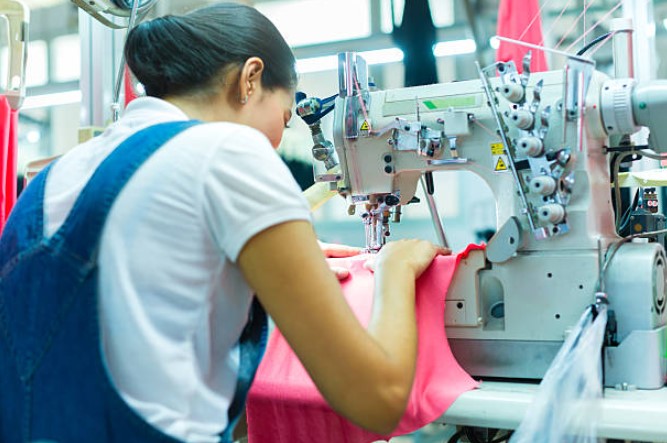In the dynamic realm of fashion, where creativity intertwines with craftsmanship, garment manufacturing emerges as a cornerstone of the industry. From the initial spark of inspiration to the final product adorning store shelves, the journey of garment production encapsulates a symphony of processes, each integral in bringing fashion visions to fruition. This blog aims to delve into the intricate world of garment manufacturing, offering insights into the multifaceted stages that define its essence. Join us on a journey from concept to closet as we unravel the artistry, innovation, and sheer dedication that underpin the creation of garments that not only reflect style but also embody the essence of modern craftsmanship.
Understanding Garment Manufacturing
Definition and Importance:
Garment manufacturing represents the intricate process of transforming raw materials into finished clothing items, serving as a crucial link in the fashion supply chain. It encompasses a range of activities, including design, sourcing, production, and distribution. Garment manufacturing plays a pivotal role in the fashion industry by bringing creative visions to life and meeting consumer demand for stylish and functional clothing.
Key Stages:
The journey of garment manufacture comprises several key stages, each contributing to the creation of high-quality apparel. These stages typically include:
- Design Concept: This initial phase involves conceptualizing garment designs, sketching patterns, and determining style elements such as silhouette, color, and texture.
- Material Sourcing: Garment manufacturers carefully select materials and fabrics based on design requirements, durability, aesthetic appeal, and sustainability considerations.
- Pattern Making: Patterns are drafted based on design specifications, serving as templates for cutting fabric pieces and ensuring uniformity in garment construction.
- Cutting and Pre-Production: Fabric is precisely cut according to patterns, with attention to detail to minimize waste and optimize material usage.
- Sewing and Assembly: Skilled artisans or automated machinery stitch fabric pieces together, following designated patterns and techniques to create finished garments.
- Quality Control: Garments undergo thorough inspection to identify and rectify any defects or imperfections, ensuring adherence to quality standards.
- Packaging and Distribution: Once approved, garments are packaged and prepared for distribution to retailers or directly to consumers, completing the manufacturing process.
Understanding these key stages is essential for appreciating the complexity and craftsmanship involved in garment manufacturing, from the conceptualization of designs to the delivery of finished products to the market.
Key Steps in Garment Manufacturing
Garment manufacturing involves a series of crucial steps that seamlessly blend creativity with precision to produce high-quality clothing items. Understanding these key steps provides insight into the intricate process of transforming raw materials into wearable fashion pieces. Below are the fundamental stages of garment manufacturing:
- Design Concept:
- At the heart of garment manufacturing lies the design concept phase, where fashion ideas are born. Designers draw inspiration from various sources to create sketches and concepts that capture the essence of their vision.
- Material Sourcing:
- Once the design concept is finalized, the next step is sourcing materials. Garment manufacturers meticulously select fabrics, trims, and accessories that align with the design specifications, considering factors such as quality, availability, and sustainability.
- Pattern Making:
- Patterns serve as the blueprint for garment construction. Pattern makers meticulously translate design sketches into precise templates, taking into account measurements, fit, and style details. These patterns guide the cutting and sewing processes.
- Cutting and Pre-Production:
- With patterns in hand, fabric cutting commences. Skilled technicians or automated cutting machines meticulously cut fabric pieces according to the patterns, ensuring accuracy and minimizing waste. Pre-production activities, such as thread matching and seam preparation, also take place during this stage.
- Sewing and Assembly:
- The sewing and assembly stage is where the magic happens. Skilled seamstresses and tailors stitch together fabric pieces using specialized sewing machines and techniques. This process involves creating seams, attaching trims, and incorporating closures to bring the garment to life.
- Quality Control:
- Quality control is paramount in garment manufacturing to ensure that finished products meet stringent quality standards. Garments undergo rigorous inspection at various checkpoints throughout the production process to detect and rectify any defects or inconsistencies.
- Finishing Touches and Packaging:
- Once the garments pass quality control checks, they undergo finishing touches such as pressing, steaming, and labeling. Finished garments are then carefully packaged and prepared for distribution to retailers or directly to consumers.
By mastering each of these key steps, garment manufacturers can streamline production processes, maintain product quality, and deliver fashion-forward garments that delight consumers worldwide.
Challenges and Innovations
The realm of garment manufacturing is not without its challenges, presenting manufacturers with obstacles that require innovative solutions. Understanding these challenges and the innovative approaches taken to overcome them is crucial for navigating the ever-evolving landscape of the fashion industry. Here, we explore some of the key challenges faced by garment manufacturers and the innovative strategies employed to address them:
Challenges:
- Supply Chain Disruptions:
- Garment manufacturing relies heavily on a global supply chain, making it vulnerable to disruptions such as raw material shortages, transportation delays, and geopolitical instability.
- Labor Shortages:
- Skilled labor shortages present a significant challenge for garment manufacturers, particularly in regions where traditional craftsmanship is in decline or wages are rising.
- Sustainability Concerns:
- The fashion industry’s environmental footprint is a growing concern, with issues such as water pollution, textile waste, and carbon emissions prompting calls for more sustainable practices.
- Fast Fashion Pressure:
- The rise of fast fashion has placed pressure on garment manufacturers to produce clothing quickly and at low cost, often compromising on quality and sustainability.
Innovations:
- Technology Integration:
- Garment manufacturers are embracing technology to streamline production processes, improve efficiency, and reduce reliance on manual labor. Innovations such as automation, robotics, and digital printing are revolutionizing the industry.
- Sustainable Practices:
- In response to sustainability concerns, garment manufacturers are adopting eco-friendly materials, implementing recycling programs, and reducing waste throughout the production process. Sustainable fashion initiatives promote transparency and ethical practices.
- Supply Chain Optimization:
- Manufacturers are diversifying their supply chains, sourcing materials locally where possible to mitigate risks associated with global disruptions. Digital supply chain management systems improve visibility and responsiveness.
- Ethical Labor Practices:
- Garment manufacturers are prioritizing fair labor practices, ensuring safe working conditions and fair wages for employees. Collaboration with labor rights organizations and certification programs promote accountability and transparency.
- Circular Economy Initiatives:
- Embracing a circular economy model, garment manufacturers are exploring innovative approaches to extend product lifespan, including rental and resale platforms, repair services, and upcycling initiatives.
By confronting these challenges head-on and embracing innovative solutions, garment manufacturers can navigate the complexities of the industry while paving the way for a more sustainable and ethical future of fashion.
Conclusion
In the fast-paced world of garment manufacturing, where creativity meets innovation, the journey from concept to closet is a testament to human ingenuity and perseverance. Despite facing formidable challenges, garment manufacturers continue to push the boundaries of possibility, leveraging technology, sustainability, and ethical practices to redefine the future of fashion.
From the initial spark of inspiration to the final stitch, each step in the garment manufacturing process represents a triumph of artistry and craftsmanship. Designers breathe life into their creations, pattern makers translate visions into reality, and skilled artisans bring garments to fruition with unwavering dedication.
As we reflect on the multifaceted nature of garment manufacturing, one thing becomes clear: the industry’s resilience and adaptability are unparalleled. By embracing innovation and sustainability, manufacturers are not only shaping the future of fashion but also paving the way for a more responsible and inclusive industry.
As consumers, we play a pivotal role in driving positive change within the fashion ecosystem. By supporting brands that prioritize transparency, ethical practices, and environmental stewardship, we can collectively shape a more sustainable and equitable future for Singapore clothing manufacturer.
In closing, let us celebrate the artistry, craftsmanship, and innovation that define garment manufacturing. As we embark on this journey together, let us honor the rich heritage of fashion while charting a course towards a brighter, more sustainable tomorrow.





More Stories
Unique Engagement Ring Designs Loved by London Brides
Top Benefits of Joining PAFI : The Indonesian Pharmacists Association
4 Industries That Use Large Industrial Tents